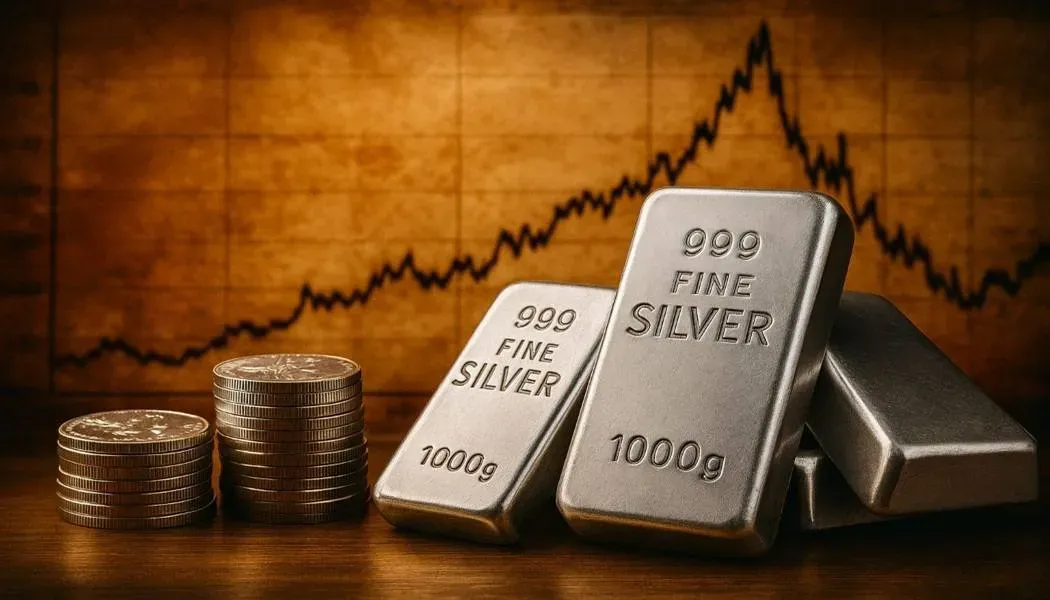
Remembering Silver Thursday: A Market Shock
On March 27, 1980, silver prices collapsed from almost $50 per ounce to around $10, erasing billions of dollars in wealth overnight. The roots of this collapse trace back to Nelson Bunker Hunt and William Herbert Hunt, Texas oil magnates who believed silver was a hedge against inflation and a weakening U.S. dollar.
From the early 1970s onward, the Hunt brothers accumulated physical silver and expanded into futures contracts. By 1980, they controlled more than 100 million ounces, a staggering share of the global silver market. Their actions pushed prices to $49.45 per ounce in January 1980 — at the time, an unprecedented high.
Regulators grew concerned about the Hunts’ dominance and the risks to financial stability. In response, the Commodity Exchange (COMEX) and Chicago Board of Trade (CBOT) raised margin requirements and restricted leveraged purchases. The new rules suddenly cut off the Hunts’ ability to maintain positions. When liquidity dried up, forced sales cascaded through the market.
March 27, 1980 — Silver Thursday — saw silver’s collapse and the Hunts’ empire crumble. Unable to meet margin calls, they declared bankruptcy, leaving banks, brokers, and investors in crisis.
The Aftermath and Lasting Legacy
The fallout was severe:
- Financial institutions faced huge losses after lending to the Hunts.
- Investor confidence in silver was shaken, leading to years of underperformance.
- Regulators introduced stricter position limits and transparency requirements to prevent future manipulation.
Yet silver endured. Over the decades, it reclaimed its role as both an industrial commodity and an inflation hedge. The lessons of Silver Thursday remain deeply relevant.
Silver’s Importance in 2025
Unlike the speculative frenzy of 1980, today’s rally rests on firmer foundations:
- Industrial Growth: Silver is indispensable in solar panels, EVs, and electronics. Global demand is expanding as green technologies scale.
- Safe-Haven Appeal: With inflation high and geopolitical tensions simmering, silver offers a lower-cost alternative to gold.
- Federal Reserve Policy: Prospects of interest rate cuts are reducing real yields, historically a catalyst for precious metals.
Silver has surged above $41 per ounce in 2025, reaching its highest level in 14 years. The rally reflects structural strength — though volatility remains part of the story.
Then and Now Compared
- Drivers: 1980’s spike came from speculation and cornering. Today’s rise stems from industrial demand and safe-haven buying.
- Regulation: Position limits and oversight make Hunt-style control nearly impossible.
- Investor Base: In 1980, two men dominated the market. In 2025, retail, institutional, and industrial demand is far more diversified.
- Prices: Silver has not yet reclaimed its record peaks ($49.45 in 1980, $49.51 in 2011), but momentum is strong.
Could Silver Thursday Repeat?
The unique conditions of 1980 — two brothers cornering the market — are unlikely to repeat. Still, silver remains among the most volatile metals.
The 2021 “silver squeeze” showed how online communities could spark sudden rallies, though on a smaller scale than the Hunt brothers. Add inflation fears and geopolitical shocks, and investors must recognize that silver can still swing dramatically.
Another Silver Thursday is improbable — but sharp corrections are inevitable in such a volatile market.
Risk vs. Opportunity in 2025
Opportunities:
- Lower entry price compared to gold.
- Expanding industrial use cases.
- Inflation hedge and safe-haven role.
Risks:
- High volatility and fast-moving corrections.
- Possible regulatory changes in futures markets.
- Speculative bubbles creating instability.
Lessons for Investors
The Hunt brothers’ collapse reminds us that:
- Diversification is critical. Concentration risks can destroy portfolios.
- Regulation matters. Sudden changes can upend strategies overnight.
- Strategy is key. Silver should be balanced with other assets for long-term stability.
The Enduring Importance of Silver
Forty-five years after Silver Thursday, the silver market is stronger and more resilient. The chaos of 1980 illustrates how speculation can destroy wealth, while today’s rally shows silver’s lasting relevance.
For investors in 2025, the message is clear: silver is powerful but volatile. Managed wisely, it offers both protection and growth. At Bullion Hunters, we provide comparison tools and price charts to help investors navigate silver’s unique journey.
Explore the live silver price chart at Bullion Hunters.
Another article that may interest you:
Silver Tops $44, Nearing Records: Could $75 Be Ahead?
